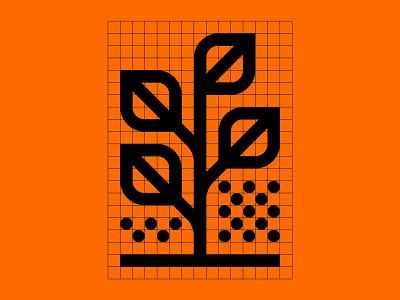Heritage Flower Farm - Heirloom Perennial Plants
페이지 정보
작성자 Sandra 작성일24-11-06 16:27 조회15회 댓글0건관련링크
본문
 Any orders placed now (December-March) is not going to be shipping until spring when the bottom thaws. We'll let you recognize when your order ships so you know to watch for it! We're now not accepting cellphone calls. Growing Heirloom Perennial Flowering Plants - Many Rare, All Classic. Recognized as an amazing Heirloom plant (messiahozov24680.blogrenanda.com) Refuge. Heritage Flower Farm was based on the eagerness of connecting plants to their origins and preserving heirloom flowers. Maybe you’re searching for Native Wisconsin plants to remind you of your grandparents’ backyard, heirloom plants to start a household tradition, or an authentic panorama for your Victorian dwelling or 1940’s bungalow. Whatever it is go to our farm with award-successful gardens and fields of flowers, all heirloom, many uncommon, ship us a message or try our online garden shop at this time! Heritage Flower Farm in Mukwonago, Wisconsin is an award-successful nursery growing more than 1,000 heirloom plants, offering their stories and spreading them to gardens from Washington D.C.’s Smithsonian and Canada’s Royal Botanic Garden to gardens like yours.
Any orders placed now (December-March) is not going to be shipping until spring when the bottom thaws. We'll let you recognize when your order ships so you know to watch for it! We're now not accepting cellphone calls. Growing Heirloom Perennial Flowering Plants - Many Rare, All Classic. Recognized as an amazing Heirloom plant (messiahozov24680.blogrenanda.com) Refuge. Heritage Flower Farm was based on the eagerness of connecting plants to their origins and preserving heirloom flowers. Maybe you’re searching for Native Wisconsin plants to remind you of your grandparents’ backyard, heirloom plants to start a household tradition, or an authentic panorama for your Victorian dwelling or 1940’s bungalow. Whatever it is go to our farm with award-successful gardens and fields of flowers, all heirloom, many uncommon, ship us a message or try our online garden shop at this time! Heritage Flower Farm in Mukwonago, Wisconsin is an award-successful nursery growing more than 1,000 heirloom plants, offering their stories and spreading them to gardens from Washington D.C.’s Smithsonian and Canada’s Royal Botanic Garden to gardens like yours.
Heirloom plants are plants with a past. These plants witnessed Native Americans and gave them food, medication, games, and implements of love and battle. They noticed America earlier than John Smith sailed up the James River in Virginia. They heard the daybreak of history, Greece of Aristotle, Europe of Elizabeth I, or Siberia of the Cossacks. They're plants with tales, not just perfumes, flamboyant flowers, or candy, pearl-like buds. They narrate harmful tales of discovery by intrepid plant hunters. They nourish wildlife, feed chook and insect companions to maintain considerable biodiversity. They're tough survivors - beneath situations of their residence places they thrive with little care. They are the originals, plants of our heritage, connecting us with the past from ancient Greece to your grandmother. The National Wildlife Federation honored Heritage Flower Farm with the distinction of Certified Wildlife Habitat, a sustainable backyard that helps wildlife. Pass This Heirloom Plant Along! At Heritage Flower Farm we develop pass-along plants - plants passed on from one generation to the following. Share this website with a gardening buddy or plan an excursion to wander our gardens in Mukwonago Wisconsin and take residence the plants of your heritage or goals!

Flood fill, also referred to as seed fill, is a flooding algorithm that determines and alters the world connected to a given node in a multi-dimensional array with some matching attribute. It's used within the "bucket" fill device of paint applications to fill connected, similarly-coloured areas with a special shade, and in video games equivalent to Go and Minesweeper for determining which pieces are cleared. A variant referred to as boundary fill uses the identical algorithms however is defined as the world related to a given node that doesn't have a particular attribute. Note that flood filling isn't suitable for drawing filled polygons, as it is going to miss some pixels in additional acute corners. Instead, see Even-odd rule and Nonzero-rule. The normal flood-fill algorithm takes three parameters: a begin node, a goal color, and a substitute color. The algorithm appears to be like for all nodes within the array which are related to the start node by a path of the goal colour and modifications them to the substitute colour.
For a boundary-fill, instead of the target colour, a border colour would be supplied. So as to generalize the algorithm within the widespread manner, the following descriptions will as an alternative have two routines obtainable. One known as Inside which returns true for unfilled factors that, by their shade, can be contained in the crammed space, and one referred to as Set which fills a pixel/node. Any node that has Set known as on it must then no longer be Inside. Depending on whether we consider nodes touching on the corners related or not, now we have two variations: eight-means and 4-way respectively. Though straightforward to grasp, the implementation of the algorithm used above is impractical in languages and environments the place stack house is severely constrained (e.g. Microcontrollers). Moving the recursion into a data structure (either a stack or a queue) prevents a stack overflow. Check and set each node's pixel shade before including it to the stack/queue, lowering stack/queue dimension.
 실시간상담문의
실시간상담문의
